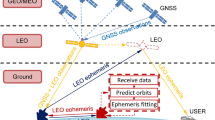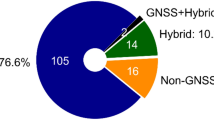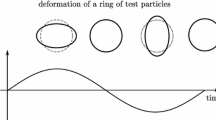Abstract
Low-low satellite-to-satellite tracking (ll-SST) range-rate observations have been predicted by two methods: one based on a linear perturbation theory in combination with the Hill equations, and one based on solving the equations of motion of two low-flying satellites by numerical integration. The two methods produce almost equivalent Fourier spectra of the range-rate observations after properly taking into account a few resonant terms. For a typical GRACE-type configuration, where the two satellites trail each other at a distance of 300 km at an altitude of 460 km, and in the presence of the EGM96 gravity field model, complete to spherical harmonic degree and order 70, the agreement between the Fourier spectra is about 1 mm/s compared to a root-mean-square (RMS) value of more than 220 mm/s for the range-rate signal. The discrepancy of 1 mm/s can be reduced significantly when not taking into account perturbations caused by the J2 term. Excluding the J2 term, the agreement between the two methods improves to 0.4 mm/s compared to a RMS value of 6 mm/s for the range-rate signal. These values are 0.01 and 2.3 mm/s when ignoring the spectrum for frequencies below two cycles per orbital revolution, reducing the discrepancy even further to about 0.5% of the signal. The selected linear perturbation theory is thus capable of modeling gravity field induced range-rate observations with very high precision for a large part of the spectrum.
Similar content being viewed by others
Author information
Authors and Affiliations
Corresponding author
Rights and permissions
About this article
Cite this article
Visser, P. Low-low satellite-to-satellite tracking: a comparison between analytical linear orbit perturbation theory and numerical integration. J Geodesy 79, 160–166 (2005). https://doi.org/10.1007/s00190-005-0455-0
Received:
Accepted:
Published:
Issue Date:
DOI: https://doi.org/10.1007/s00190-005-0455-0




